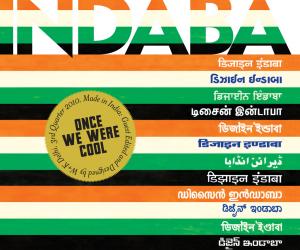First Published in
Up until his death at just 46 years of age, in 1938, Bhupinder Singh was a maharajah, statesman, military man and a patron of the finer things in life – food, the arts, jewellery, music, cricket and, by many accounts, women.
According to his grandson, the current Maharaja of Patiala, Amarinder Singh (he was born after his grandfather’s death), Bhupinder Singh became a fully-fledged leader at 16.
Singh says his grandfather put Patiala on the map in a number of ways. He campaigned for India to participate in the Olympics, and became a decorated military leader who was sent to Europe during the First World War to boost the morale of injured Indian troops who were fighting for the British.
But perhaps what he’ll best be remembered for is the hedonistic way he lived his life.
It may have been a sign of the times – the final days of extravagance for the Indian royalty, whose lifestyles were largely left to their own devices by the British administration – yet Singh says his grandfather was, “a charismatic person who just lived life as he chose to.”
“This [way of life] eventually killed him,” he says. “[People] used to say that he used to drink too much but he didn’t. It was not alcohol that killed him, I think it was excess of eating.”
According to his grandson, the Maharaja was known to eat 12 eggs a day, quail soup was an everyday affair for lunch and he’d drink four to five litres of milk daily.
Singh says his grandfather’s commanding presence wasn’t only attributable to his important political and royal standing – the man was also physically large. He was over six foot tall and weighed around 28 stone (178 kg).
Much to the dismay of Singh, many writers have largely concentrated on the scandalous parts of his grandfather’s life – namely the stories surrounding his insatiable appetite for women.
And when writers have skirted around such topics, others have objected to such demure portrayals, demanding that one call a spade a spade. Journalist Arvind N Das once wrote that Bhupinder Singh was, “[a] bizarre Maharaja, a character almost straight out of the fabulous Arabian Nights – fantastic and cruel, extravagant and self-indulgent.”
It was both his veritable political standing and his devil-may-care attitude that attracted criticisms of his personal life, believes Singh. “Because of who he was, and because the other states laid low and did what they wanted, obviously people picked up scandals about him."
“This business of how many ladies there were, this is something that was in every state in India so Patiala was nothing out of the ordinary. I know states where there were thousands of ladies,” he says.
Indeed, the grandson confirms that he did have 11 Maharanis (four of whom were official wives) and a staggering 52 children.
Towards the end of his reign in Patiala, he found something of an enemy in the English Viceroy, Marquess of Willingdon.
It was not uncommon for Indian royal leaders to be deposed, and whether it was a clash of personalities, political discord or something more sinister, Willingdon sought the deposition of Bhupinder Singh.
To highlight their quarrelsome relationship is the famous Rolls Royce incident. Singh says his grandfather had around 30 Rolls Royce vehicles. Willingdon wrote to inform him that this was extravagance to no end. The reply? That every city needs a garbage disposal system and the cars were purchased to keep Patiala clean. So the luxury vehicles were set to work, ferrying stinking garbage to the rubbish tip.
“It’s just that he didn’t give a damn and he did just what he felt like doing,” says Singh of his grandfather’s attitude.
Bhupinder Singh stayed and eventually Willingdon was posted elsewhere. The fact that his grandfather was never deposed, says Singh, is because he had the support of decision-makers in Britain.
And there are more examples of extravagance. Singh says the Maharaja was known to book the top two floors of the luxury Savoy Hotel in London – he’d stay there for months on end with most of his family and entourage. He did the same at Berlin’s iconic Hotel Adlon Kempinski which was also a favourite meeting point for film stars of the day like Charlie Chaplin and Marlene Dietrich.
He would keep people waiting for hours and with tireless gusto he poured money into schools, a flagging gun business and Cartier, the high-end jewellery design house, which according to Singh was near bankruptcy. “[A] massive order of jewellery revived the business,” he says.
Cartier, under his instructions, fashioned what is believed to be one of its greatest designs. The bespoke diamond “bib” was supposedly made from over 2 930 diamonds and featured a yellow diamond the size of a golf ball – one of the world’s largest. A Times of India article states that it would be worth US$20 million, if it were still intact.
The world was a different place when Maharaja Bhupinder Singh lived an unabashed life of opulence – and when he died it was, for better or worse, the end of an era.











